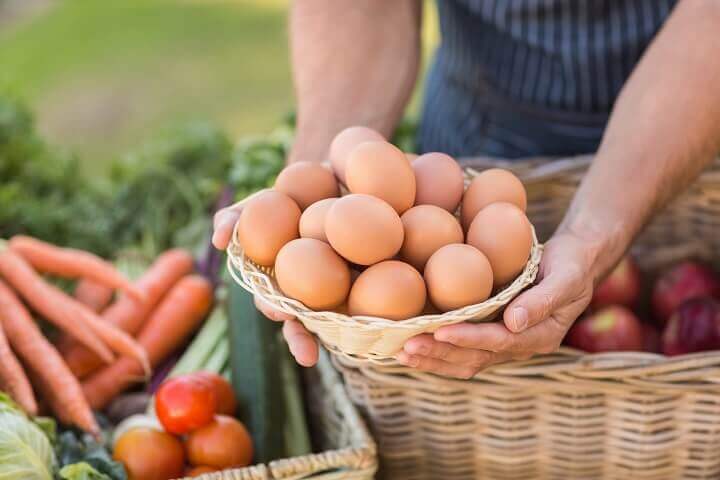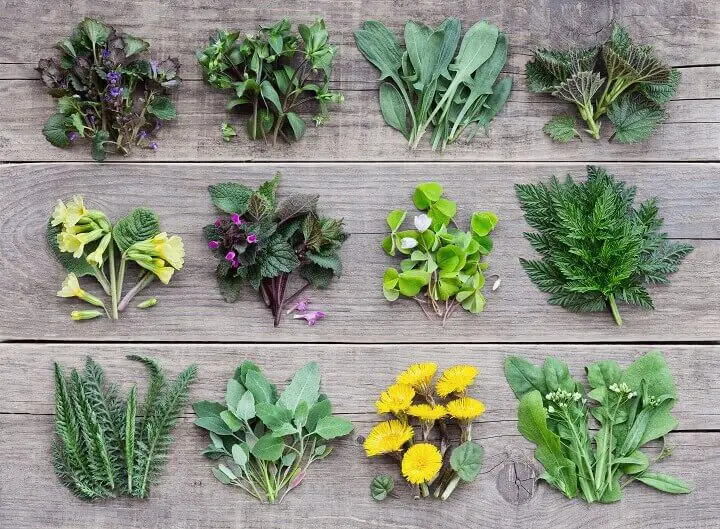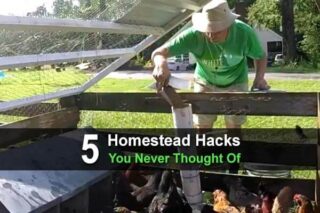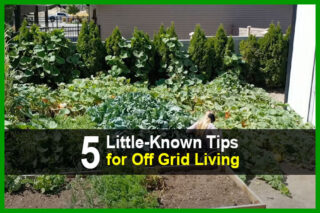Estimated reading time: 9 minutes
Are you interested in homesteading, but not sure where to start? If so, this post is for you. From finding the right land to choosing the right animals, we’ve got you covered with our list of the 30 best homesteading tips for beginners.
No two homesteading experiences will be exactly alike. However, these homesteading tips for beginners should give you the confidence you need to start your journey off on the right foot.
Want to save this post for later? Click Here to Pin It On Pinterest!
1. Start Small – and Slow
The first – and most important – homesteading tip to follow is that you need to take things slow.
Chances are, if you’re like most beginning homesteaders, you’re probably chomping at the bit to try everything out for yourself. Cattle! Dozens of raised beds! A massive compost pile! An off-the-grid cabin that runs on solar power!
However, if you try to do everything at once, you’re not only going to run out of money pretty fast but you’re also going to get overwhelmed. And when you get overwhelmed, most of those projects are going to fail. Take it easy and do just one thing at a time.
2. Get Up Close and Personal With Your Soil
No homestead can be a great homestead if it doesn’t have good soil. Take a close look at your soil. It will support not only you, but all plant and animal life that exists on the homestead. Take the time to evaluate its composition, pH, and nutrient content – and strive to improve it as effectively and naturally as you can.
Compost, which we’ll discuss later in this post, is your best friend!
3. Pay Attention to the Climate
Also, take a close look at the climate and weather patterns where you live. What is your USDA growing zone? Without knowing this information, it will be hard to plan ahead for the rest of the year.
4. Cut Expenses
Before embarking on the homesteading lifestyle, take a close look at your budget and see if there are any unnecessary expenses that can be slashed. Paying for cable? Get rid of it. Buying new clothes every few weeks? Stop doing that. Wherever you can trim some of the fat, do it.
5. Plan for Some Income
At the same time as you cut some expenses, you should also think carefully about how you can bring some extra money into your homestead coffers. If you’re working a second job outside of the home, then you might not need this income – but it’s a good idea to plan for a source just in case.
Can you sell eggs? Tutor local children? Start a blog? Think about your skills and what you like to do – then consider whether you might be able to monetize those skills.

6. Forget About Aesthetics
We all want our house and garden to look good. However, if your main goal is self-sufficiency, you need to let go of the vanity and stop caring about how things look. If they’re functional, that’s all that matters.
7. Keep a Good Perspective
As a homesteader, you are going to fail. It is not a matter of if, but of when. To be successful, you need to find a way to roll with the punches and learn from your failures and mistakes – not be defeated by them.
8. Consider the Layout
Planning is everything when it comes to a successful homestead. Before you start a single project, take the time to plan the layout of your homestead. Where will the barns go? Your gardens? Where will you be getting water and electricity from?
9. Focus on “Calorie” Crops
In your garden, focus on growing high-calorie crops that store through the winter months.
Some of the most calorie-and nutrient-dense crops you can grow to give you more “bang for your buck” include:
- Barley
- Beans
- Carrots
- Corn
- Oats
- Peas
- Potatoes
- Winter squash
- Winter wheat
10. Research Before You Buy
Don’t buy anything before you take the time to research it. Whether it’s a new type of livestock or a new appliance for the kitchen, make sure you put the time into doing some research so you can make sure it’s necessary in the first place – and a good fit for your homestead.
11. Start a Kitchen Compost
A kitchen compost will give you a place to discard all of your kitchen scraps – from veggie scraps to coffee grounds – and turn it into nutrient-rich soil. Compost can be used to fertilize your plants and improve the soil composition in your garden.
12. Diversity is Key
No strong homestead ever relied on just a single crop. For you to be self-sufficient, take a look at what your family currently eats and then come up with a list of plants to grow and animals to raise that will help meet those dietary needs.
13. Start Your Own Seeds
To save money on nursery plants, start your own seeds indoors. You can sell the extras to friends and neighbors!
14. Learn Plant Identification
As a homesteader, you need to be able to identify the plants that are growing in your garden. That’s pretty obvious! However, you also need to be able to identify things like weeds, toxic plants, and mushrooms, too.
15. Store Things Wisely
Store your tools and other equipment properly. Be obsessive about cleaning and maintaining your gear. Otherwise, you're going to find that you have to replace them – something that is incredibly costly.
16. Invest in a Greenhouse or Hoop House
For year-round gardening and self-sufficiency, consider investing in a hoop house or greenhouse.
17. Enlist the Kids
If you have kids, encourage them to get involved in the homestead. Come up with a list of age-appropriate chores so that they can pull their weight.
18. Rethink Your Grocery List
What items on your grocery list do you actually need to be? If you’re buying any store-bought, processed snacks, you can probably make those yourself at home. Bake your own bread. Grow your own vegetables. Raise your own meat. You can produce just about everything for yourself at home.
19. Get Good at Food Preservation
Whether you’re interested in canning, fermenting, or freezing the goods you harvest, make sure you have multiple methods of food preservation under your belt so that you can produce and store enough food to last you through the winter.
20. Build Strong Fences
Don’t waste time chasing pigs all over the county. Make sure your fences are strong and sturdy, regardless of the type of animals you have. Even if you have to pay a bit extra to make sure the fences are secure, it’s worth it.
21. Learn to Butcher Your Own Animals
It might be unpleasant, but if you eat meat, you can’t have a self-sufficient homestead until you learn how to slaughter and process your own livestock.
22. Make the Most of Weeds
Weeds are the nemesis of most gardeners, but they don’t have to be.
Quit mowing your lawn and see if there are ways you can convert more of your unused lawn into an edible growing space. And consider harvesting some of those weeds or use in your cooking!

23. Stock Up on the Essentials
Make sure your homestead is well-supplied with everything you need, from medical supplies to toiletries, dry goods to emergency gear (like batteries and flashlights).
24. Grow Indoors
Even if you live in the city, homesteading is still possible. Start by growing some vegetables and herbs indoors in containers!
25. Produce Your Own Animal Feed
Can you grow your own animal feed? Although it takes a bit more space to do this, it’s a great way to be self-sufficient and reduce your reliance on the outside world. You can even grow a simple tray of microgreens in your basement to feed your chickens! Every little bit helps.
26. Prepare for Emergencies
Prepare for the worst – and hope for the best. Make sure you have systems in place so that you’re cared for in an emergency. From backup power sources to snow removal plans, make sure you know what to do in a crisis.
27. Set Up Automated Systems
What tasks on your homestead end up taking the most amount of work? Once you get rolling, consider these tasks and see if you can find ways to automate them.
Are you sick of feeding the pigs morning and night? Build an automated feeder or automated waterer so they can help themselves. Don’t want to lock the chickens into the coop at night and let them out in the morning? You can install an automatic coop door opener.
Get creative! You’ll save a ton of time.
28. Learn to Forage
Foraging is a great way to fill in gaps in your diet without taking up more space for a garden or livestock. Hunting is technically a type of foraging, too, but you can also look in the wild for things like flowers, weeds, and even mushrooms (make sure you know how to identify these, though).
29. Reduce, Reuse, Recycle
Try not to throw anything away. Reduce what you buy, but for what you already own, think about whether it can be reused or recycled (or “upcycled”) on the homestead. The pallet craze of late gives a nod to just how easy it is to reuse the items around your home!
30. Ask for Help
Finally, don’t be afraid to ask for help! Whether You're part of a larger homesteading community in your area or you join a few homesteading groups online, take the time to learn and ask for help when it’s needed. Just because you’re asking for help, it doesn't mean that you aren’t self-sufficient!
How Do I Prepare for Homesteading?
Learning as much as you can before you set off on your own is the best thing you can do if you want to be self-sufficient.
If you’re thinking of homesteading, there are a few things to take into consideration before getting started. The tips we shared should help get you started on the right foot. Now it’s up to you to put in the work and make your dream of self-reliance a reality!
Like this post? Don't Forget to Pin It On Pinterest!













two old books Back to basics as well as The have more plan will help you with every aspect of homesteading.